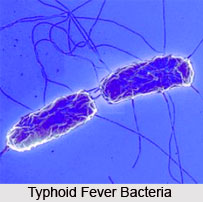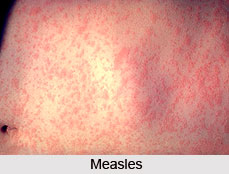 The human body possesses a `normal core temperature`, ranging from 37.0 degrees Celsius or 98.6 degrees Fahrenheit, which however has to terminate within a proper restricted limit. Any fluctuation in this `core` figure suggests that something definitely is amiss; a rise in temperature signals that something is wrong with the physical body. Common fevers, as this rise in body temperature is always classified lasts less than a week are mostly induced by everyday viral infections.
The human body possesses a `normal core temperature`, ranging from 37.0 degrees Celsius or 98.6 degrees Fahrenheit, which however has to terminate within a proper restricted limit. Any fluctuation in this `core` figure suggests that something definitely is amiss; a rise in temperature signals that something is wrong with the physical body. Common fevers, as this rise in body temperature is always classified lasts less than a week are mostly induced by everyday viral infections.
Common fevers are almost always classified broadly into three elementary categories;
The basic types of common fever are thus understood as being
* Bacterial Infections
* Viral Fevers
* Parasitic Fevers
Bacterial Infections
High fever accompanied by cough, sputum and terrible breathlessness, are characteristic indications of respiratory tract infections. Urinary tract infection induces high fever together with chills and severity.
Viral Fevers
Viral fever, counted as one of the most impressing and upsetting type of common fever, includes -
Dengue: High fever accompanied by an intolerable headache, body aches, backache and joint pains mark this deadly disease. Rashes bearing reddish colour can also erupt. In rare instances, the platelet count diminishes alarmingly and lead to bleeding massacres in dengue fever, then acknowledged as dengue haemorrhagic fever.
Chikunguniya: This type of `common` fever bears sizeable similarities with dengue, but is comparatively less lethal. Relentless joint pains can also last for weeks and months.
Viral hepatitis A or E
: Patients with this type of common fever of hepatitis a or B, generally have a comparatively low grade fever in the beginning. One`s appetite drops down gradually, due to nausea; yellow discoloration in the eyes can also be witnessed on the 4th day of sufferance.
Parasitic fevers
Parasitic fevers, mostly considered most critical and mortal both in the domain of doctors and patients comprise as that type of common fever category, which can be elucidated as
Malaria: Patients suffering from malaria are by and large prone to high fever, accompanied by chills and severeness. As soon as the malarial fever subsides, the sweating begins to get profuse. Headaches and body aches are pretty commonplace and the fever can at times also lead to anaemia or jaundice.
 Filaria: A patient suffering from filarial can have body temperatures shooting up to 103-104 degrees Fahrenheit, also accompanying chills and unendurable troubles. Pain and swelling in the groin and lower limbs is also observed in most cases of the ailing.
Filaria: A patient suffering from filarial can have body temperatures shooting up to 103-104 degrees Fahrenheit, also accompanying chills and unendurable troubles. Pain and swelling in the groin and lower limbs is also observed in most cases of the ailing.
Typhoid
: This type of `common` fever bears witness to extreme high grade fever with excruciating headache and body anguishes. The patient may also have unrelenting cough, constipation and diarrhoea.
Viral and parasitic types of common fevers can be successfully detected through essential mandatory tests. On the one hand viral hepatitis and typhoid are induced by polluted water and food, the rest are stimulated by mosquito stings. All of the above stated ailments can although be forestalled by taking the much requisite precautions.
Besides the already described elementary three types of common fever categories, fever in India as well as all through the world, are also identified with other kinds and types of cough and cold, existing in several, as can also stated like -
Typhoid fever can be categorized as that type of common fever, which defines itself as a piercing systemic disease, stimulated by salmonella typhi (a rod-shaped gram-negative enterobacteria). It is a circumstance during which there exists a distinctive and archetypal course of temperature, with distinguishable abdominal symptoms consisting of ulceration of bowel movements.
Rheumatic Fever has always been looked at as a most severe and grave disorder. Rheumatic fever of inflammatory rheumatism is a very serious chronic sickness; this disease primarily affects and damages children and adolescents.
Influenza, hugely acknowledged as `flu`, is perhaps the most viewed and everyday type of common fever and a clinical condition, which ensues from infection by influenza viruses. The principal effects of the influenza viruses are on the upper respiratory tract, the nose and throat, with potential spreading and participation of the lungs.
Measles is defined as an acute febrile eruption, a rather uncommon type of common fever, creating knotty situations for the ailing health. Measles starts with a status of minor feverishness, coldness in the head, watering of the eyes and dry cough. It is a highly infectious disease and is mostly common among children. In fact, measles is so widespread at this stage of life that nearly all children everywhere in the world go through this brief period of red spots and rashes.
Meningitis usually comes after an attack of otitis media (middle ear disease, most common in children), or mastoiditis (infection of bone projecting behind the ear), or brain abscesses and even tonsillitis. Any skull fracture or penetrative head injury can also result in the meningitis type of common fever. At times, tuberculosis can get circularized towards the brain and cause this deadly disease. In case of epidemic meningitis, the germs are seemingly spread by individuals who have a mild sore throat or cold.

However, there exist specific fever patterns that can occasionally trace towards the diagnosis, like
* Pel-Ebstein fever: A particular kind of fever associated with Hodgkin`s lymphoma; represented by high temperatures for one week and low for the next week and so forth. However, there exist a few debatable issues as to whether this pattern truly exists at all.
* Continuous fever: Body temperature in such instances remain above normal throughout the day and does not fluctuate more than 1 degree Celsius in 24 hours; examples can be cited as being lobar pneumonia, typhoid, urinary tract infection, brucellosis, or typhus. Typhoid fever might also exhibit a certain fever pattern, with a slow step by step increase and a high plateau.
* Intermittent fever: In such an illustration, elevated temperature is present only for some hours of the day and turns to normal for remaining hours, e.g. malaria, kala-azar, pyaemia, or septicaemia.
* Remittant fever: Temperature in this type of common fever classification, remains above normal throughout the day and fluctuates more than 1 degree Celsius in 24 hours, e.g. infective endocarditis.
* Relapsing Fever calls for another kind of everyday sort of illness, that reappears at times, in fact a number of times, during which it takes almost quite a few days for the body temperature to return back to normal.
A neutropenic fever, also referred to as `febrile neutropenia`, is a type of fever in the absence of the normal immune system functioning. Due to the lack of infection-contending neutrophils, a bacterial infection can disperse in a violent manner; this fever is as a result generally considered a case of dire medical emergency. This kind of neutropenic fever is more commonly witnessed in people experiencing immune-suppressing chemotherapy as opposed to ostensibly healthy individuals. Febricula is another type of common mild fever of short length, accompanied by characteristics of indefinite origin and completely devoid of distinctive pathology.




